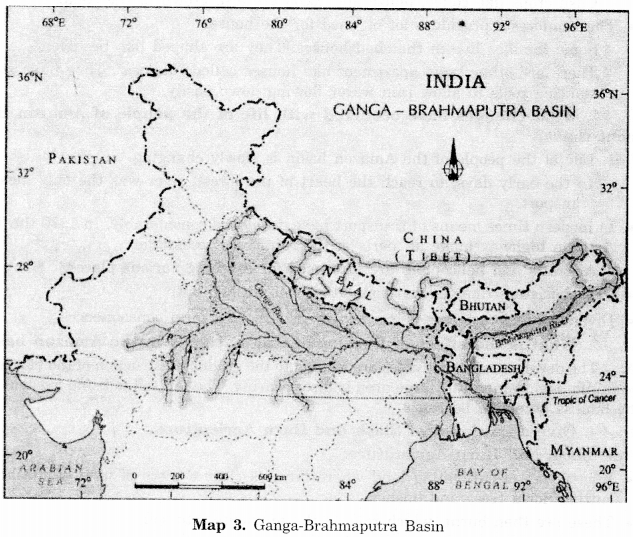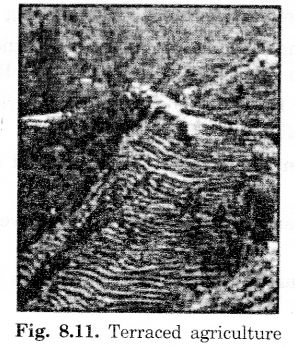Human Environment Interactions: The Tropical and the Subtropical Region Class 7 Extra Questions Social Science Geography Chapter 8
NCERT Extra Questions for Class 7 Social Science Geography Chapter 8 Human Environment Interactions: The Tropical and the Subtropical Region
Prelude
Life in the Amazon Basin
- Look at the world map (on page 56 of the textbook), the Amazon Basin lies very close to the equator, between 10°N to 10°S.
- This region is known as the equatorial region.
- The river Amazon flows through this region.
It flows1 from the mountains in the west and reaches the Atlantic Ocean in the east.
- Numerous tributaries join in the Amazon river and they together form the Amazon Basin.
- The river basin drains portions of Brazil, parts of Peru, Bolivia, Ecuador, Columbia and a small part of Venezuela.
- Ecuador
- Columbia
- Brazil
Africa:
- Yabon
- Dem.Rep of Congo
- Uganda
- Kenya
Asia:
- Indonesia
Climate
- Amazon basin stretches directly on the Equator.
- It has hot and wet climate throughout the year.
- Both day and nights are almost equally hot and humid.
- Skin feels sticky.
- It rains almost every day.
- It rains without much warning.
- The day temperatures are high with high humidity.
- At night the temperature goes down but humidity is high.
Rainforests
- In Amazon basin, it rains heavily.
- Thick forests grow here.
They are in fact so thick and dense that “roof* created by leaves and branches do not allow the sunlight to reach the ground.
- The ground remains dark and damp.
- Only shade tolerant vegetation grows here.
- Orchids, bromeliads grow as plant parasites.
Wild Life of Amazon Basin
- The rainforests are rich in fauna.
- Birds like toucans, humming birds, birds of paradise with their brilliantly coloured plumage, oversized bills for eating make them different from birds found in India.
- These birds also make loud sound in the forests.
- Animals like monkeys, sloth and ant-eating tapirs are found here.
- Various species of reptiles and snakes are also found in these jungles.
- Crocodiles, snakes, pythons abound.
- Anaconda and Boa constrictor are some of the species.
- Amazon basin is also the home of thousands of species of insects.
- Several species of fish like the flesh-eating Piranha fish is also found in the river.
- Amazon basin is actually extraordinarily rich in the variety of life found there.
People of the rainforests
- Men hunt and catch fish along the rivers.
- Women take care of the crops.
- They mainly grow tapioca, pineapple, and sweet potato.
- Hunting and fishing being uncertain, it is the women who keep their families alive by feeding them the vegetables they grow.
- They practise “slash and bum agriculture”.
- The staple food is manioc. It is also known as cassava. It grows under the ground like the potato.
- The people also eat queen ants and egg sacs.
- Cash crops like coffee, maize and cocoa are also grown in the Amazon Basin.
The rainforests provide a lot of wood for the houses.
- Some families live in thatched houses. They are shaped like beehives.
- There are other large apartment-like houses called “Maloca”. They have steeply slanting roofs to allow rain water flowing down easily.
- In modem times means of transport have developed considerably. In 1970 the Trans Amazon highway made all parts of the rainforest accessible.
- Aircrafts and helicopters are also used for reaching various places.
- The aborigines (indigenous) population was pushed out.
- Diverse rain forests are being destroyed with long term consequences.
- It is a way of cultivating land where farmers clear a piece of land by slashing or cutting down trees and bushes.
- These are then burnt, which release the nutrients into soil.
- New crops are grown in this cleared field for a few years.
After repeatedly using the patch of land, the soil loses its nutrients.
- So it is abandoned.
- Then they clear another plot of land to plant.
In the meantime young trees grow in the old field.
- In this way soil fertility is restarted (restored).
- People then return to it.
- They start cultivating again by repeating the process.
Life in the Ganga-Brahmaputra Basin
- It lies in the sub-tropical region.
- It is located between 10°N and 30°N latitudes.
The tributaries of the River Ganga like the Ghagra, the Son, the Chambal, the Gandak, the Kosi and the tributaries of Brahmaputra drain it.

- Some of the tributaries of the river Brahmaputra are:
- Dihang, Dibang. Lohit and Dhansiri.
The main physiographical features of the Ganga-Brahmaputra Basin are:
- Mountains and foothills of the Himalayas
- Sundarbans delta
- Ox-bow lakes dot the plain area.
- The Ganga-Brahamputra Basin is dominated by monsoon climate.
- The monsoon brings rains from mid-June to mid-September.
- The summers are hot.
- The winters are cool and generally dry.
- Uttarakhand
- Uttar Pradesh
- Northern Madhya Pradesh
- Northern Chhattisgarh
- Bihar
- Jharkhand
- West-Bengai.
Brahmaputra:
- Arunachal Pradesh
- Assam
- Meghalaya
- Ganga-Brahmaputra basin has varied topography.
- The environment plays a dominant role in the distribution of the population here.
- The mountain areas with steep slopes have inhospitable terrain.Hence less number of people live in the mountain area of the Ganga-Brahmaputra basin.
- The plain area provides the most suitable land for human habitation.
- The soil is fertile.
- Agriculture is the main occupation of the people.
- The density of population is very high.
- Since cultivation of paddy requires sufficient water, it is grown in the areas where the amount of rainfall is high or enough water is available.
- Wheat, Maize, Sorghum, Gram and Millets are major crops that are grown as food crops.
- Cash crops like sugarcane and jute are grown in large quantities.
- Banana plantation are seen in some areas of the plain.

- In West-Bengal and Assam tea is grown in plantations.
- Silk is produced through the cultivation of silk worms in parts of Bihar and Assam.
- In the mountains and hills, crops are grown on terraces made on gentle slope.
- The vegetation cover is according to the type of landforms.
- Delta region is covered with mangrove forests.
- In this basin tropical deciduous trees grow along with teak, sal, peepal.
- Thick bamboo groves are in Brahmaputra plains.
- In parts of Uttarakhand, Sikkim and Arunachal Pradesh and other small states of the North-east coniferous trees like pine, deodar, and fir are seen.
- Elephants, tigers, deer and monkeys are common.
- One homed rhinoceros, Bengal tiger, crocodiles and alligators are found.
- Large aquatic life is found in fresh waters like rohu, catla, hilsa.
- The Dolphin eats small fish only. The presence of Susu is an indication of the health of the river.
- The untreated industrial and urban wastes with high amounts of chemical are killing this species.
- The Ganga-Brahmaputra Plain has several big towns and cities.
- The cities of Allahabad, Kanpur, Varanasi, Lucknow, Patna all with a population of more than ten lakhs are located along the River Ganga.
- The waste water from these towns and industries is discharged into the river leading to its pollution.
- All the four means of transport are well-developed in Ganga-Brahmaputra basin.
- In the plain areas the roadways and railways transport the people from one place to another.
- The waterways, is an effective means of transport particularly along the rivers. Kolkata is an important port on the river Hooghly.
- The plain areas have a large number of airports.
The following make the basin important from the point of tourism.
- Taj Mahal on the banks of River Yamuna in Agra.
- Allahabad on the confluence of the River Ganga, Saraswati and Yamuna.
- Buddhist centres in Uttar Pradesh and Bihar. ,
- Lucknow with its Imambara.
- Assam with Kaziranga and Manas wild life sanctuaries.
- Arunachal Pradesh with a distinct tribal culture.
There are so many other places to visit.
Objective Type Questions

Multiple Choice Questions
Prelude
Life in the Amazon Basin
Climate
Rainforests
People of the Rainforests
Life in the Ganga-Brahmaputra Basin










